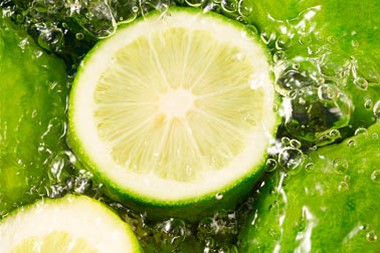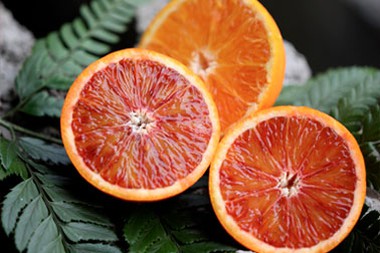Phyllanthus Urinaria Extract is extracted from a genus of plants that belongs to the family Phyllanthaceae. It comprises over 700 species, many of which have been used in traditional medicine for centuries. Phyllanthus is known for its potential health benefits and is rich in various vitamins and nutrients that support overall well-being. In this article, we will explore the vitamins found in them and their potential health benefits.
Vitamin C is one of the key vitamins present in it. It is a powerful antioxidant that helps protect the body against oxidative stress caused by free radicals. Vitamin C also plays a crucial role in collagen synthesis, immune function, and wound healing. Phyllanthus species such as Phyllanthus emblica, commonly known as Indian gooseberry or Amla, are particularly high in vitamin C. Amla is often used in Ayurvedic medicine to enhance immunity, improve digestion, and promote healthy skin and hair.
Vitamin A is another essential vitamin found in it. It is important for maintaining healthy vision, supporting immune function, and promoting cell growth and development. Phyllanthus species like Phyllanthus niruri, also known as Chanca Piedra, contain significant amounts of vitamin A. Chanca Piedra has been traditionally used to support liver health, kidney function, and urinary tract health.
Phyllanthus species also contain a range of B vitamins, including vitamin B1 (thiamine), vitamin B2 (riboflavin), vitamin B3 (niacin), vitamin B5 (pantothenic acid), vitamin B6 (pyridoxine), vitamin B9 (folate), and vitamin B12 (cobalamin). B vitamins are essential for energy production, brain function, red blood cell formation, and metabolism. These vitamins play a vital role in maintaining overall health and well-being. Phyllanthus species, such as Phyllanthus amarus, are known for their rich content of B vitamins.
In addition to vitamins, it also contains various minerals that are important for the body's proper functioning. These minerals include calcium, magnesium, potassium, iron, and zinc, among others. Calcium is essential for strong bones and teeth, while magnesium supports nerve function and muscle health. Potassium is crucial for maintaining fluid balance and proper heart function. Iron is vital for red blood cell production and oxygen transport, while zinc plays a role in immune function and wound healing.
Phyllanthus plants are also rich in phytochemicals, which are natural compounds that contribute to their medicinal properties. These phytochemicals include flavonoids, tannins, alkaloids, and phenolic compounds. Flavonoids, in particular, are known for their antioxidant and anti-inflammatory properties. They help protect the body against cellular damage and reduce the risk of chronic diseases.
The presence of these vitamins and phytochemicals in Phyllanthus species contributes to their potential health benefits. They may have antioxidant, anti-inflammatory, antimicrobial, and hepatoprotective properties. Phyllanthus extracts and supplements are commonly used in traditional medicine systems, such as Ayurveda and traditional Chinese medicine, for various purposes, including liver support, digestive health, and immune system enhancement.
However, it is important to note that while Phyllanthus plants have been traditionally used for their medicinal properties, scientific research is ongoing to validate these claims and understand the mechanisms of action. As with any herbal supplement, it is recommended to consult with a healthcare professional before using Phyllanthus products, especially if you have any underlying health conditions or are taking medications.
In conclusion, Phyllanthus plants are a rich source of vitamins, minerals, and phytochemicals that may contribute to their potential health benefits. Vitamin C, vitamin A, and B vitamins are among the essential vitamins found in various Phyllanthus species. These plants also contain minerals that are important for overall health. The presence of phytochemicals, such as flavonoids, further enhances their medicinal properties. While it has a long history of traditional use, scientific research is necessary to fully understand its efficacy and safety.

What is the difference between Phyllanthus amarus and Phyllanthus urinaria?
Phyllanthus amarus and Phyllanthus urinaria are two closely related plant species that belong to the Phyllanthaceae family. These plants have been widely used in traditional medicine across various cultures for their potential health benefits. While they share some similarities, there are distinct differences between Phyllanthus amarus and Phyllanthus urinaria that set them apart. In this article, we will explore these dissimilarities and shed light on their unique characteristics.
Taxonomy and Distribution: Phyllanthus amarus, also known as "Stonebreaker" or "Chanca piedra," is a herbaceous plant native to tropical regions of the Americas, including the Amazon rainforest. It has a long history of use in Ayurvedic and traditional South American medicine. On the other hand, Phyllanthus urinaria, commonly called "Chamber bitter" or "Gripeweed," is found in various parts of the world, including Asia, Africa, and the Americas. It has been used in traditional Chinese and Southeast Asian medicine for centuries.
Morphology: In terms of physical appearance, both plants share certain characteristics. They are small, annual, and herbaceous plants that typically grow up to 50 centimeters in height. Their leaves are arranged alternately along the stem and are small and elliptical in shape. Both species produce small flowers that are either male or female, and they have similar fruit structures. However, there are subtle differences in the shape and arrangement of their leaves and flowers, which can aid in distinguishing between the two species.
Traditional Uses: Phyllanthus amarus and Phyllanthus urinaria have been used in traditional medicine for various purposes, although their specific applications may vary. Phyllanthus amarus has been traditionally used to support liver health, promote kidney stone dissolution, and alleviate gastrointestinal disorders. It is also believed to possess anti-inflammatory and diuretic properties. In traditional Chinese medicine, Phyllanthus urinaria is often used to support urinary system health, treat jaundice, and alleviate symptoms of various gastrointestinal conditions. Additionally, it is believed to have antiviral and antibacterial properties.
Phytochemical Composition: Both Phyllanthus amarus and Phyllanthus urinaria contain a wide range of bioactive compounds that contribute to their medicinal properties. These plants are rich in phytochemicals such as lignans, flavonoids, alkaloids, tannins, and polyphenols. However, the specific composition and concentration of these compounds may differ between the two species, which could potentially result in variations in their therapeutic effects.
Research and Modern Applications: Phyllanthus amarus and Phyllanthus urinaria have garnered significant interest in modern scientific research due to their potential health benefits. Studies have explored their hepatoprotective, antioxidant, anti-inflammatory, and antimicrobial activities. Some research suggests that Phyllanthus amarus may have antiviral properties, particularly against hepatitis B virus. Phyllanthus urinaria has shown potential in inhibiting the growth of certain bacteria and viruses, including herpes simplex virus and human immunodeficiency virus (HIV). However, it is important to note that further research is needed to fully understand and validate their efficacy and safety for various medical applications.
In conclusion, while Phyllanthus amarus and Phyllanthus urinaria share certain similarities as medicinal plants, they exhibit distinct characteristics in terms of taxonomy, distribution, morphology, traditional uses, phytochemical composition, and potential applications. Understanding these differences can aid in the appropriate utilization of these plants in traditional medicine and may provide insights for further scientific research.
Is Phyllanthus urinaria extract good for the liver?
Liver Health and the Importance of Natural Remedies:
The liver is a vital organ responsible for detoxification, metabolism, and various other essential functions in the body. Maintaining liver health is crucial for overall well-being, as an unhealthy liver can lead to various complications and negatively impact overall health.
In recent years, there has been growing interest in natural remedies and herbal extracts as potential alternatives or complements to conventional medical treatments. it is one such herbal remedy that has gained attention for its potential liver-protective properties.
Scientific Evidence:
Several studies have investigated the effects of it on liver health. These studies have primarily focused on its hepatoprotective (liver-protective) and antioxidant properties.
Hepatoprotective Effects:
Research suggests that it may help protect the liver from damage caused by toxins, alcohol, and certain medications. A study published in the Journal of Ethnopharmacology demonstrated that it exhibited significant hepatoprotective effects in rats exposed to hepatotoxic agents. The extract was found to reduce liver injury markers and improve liver function.
Contact us: selina@ciybio.com.cn



